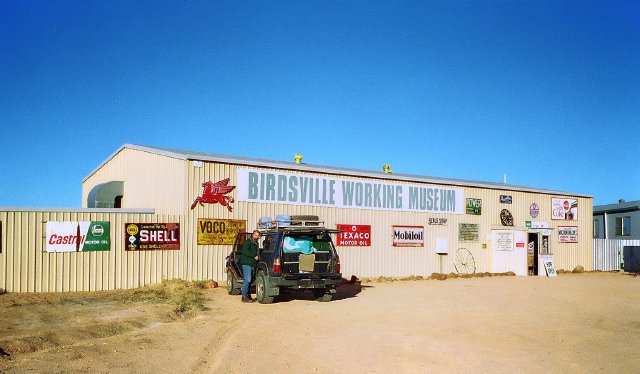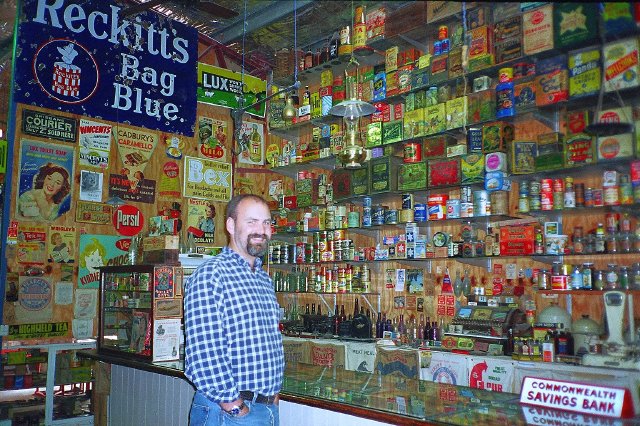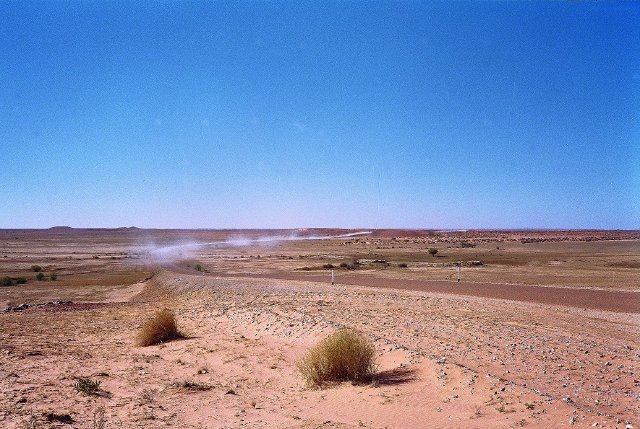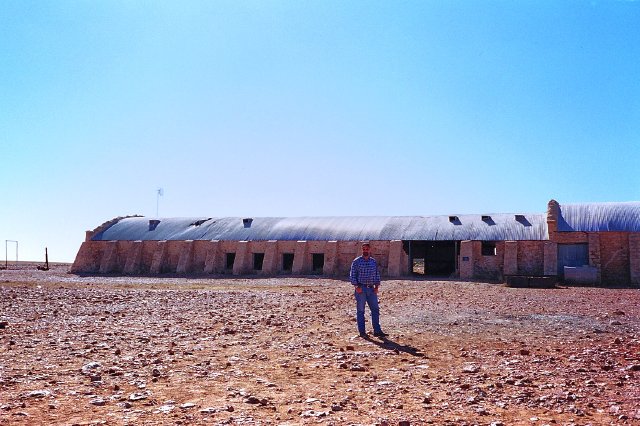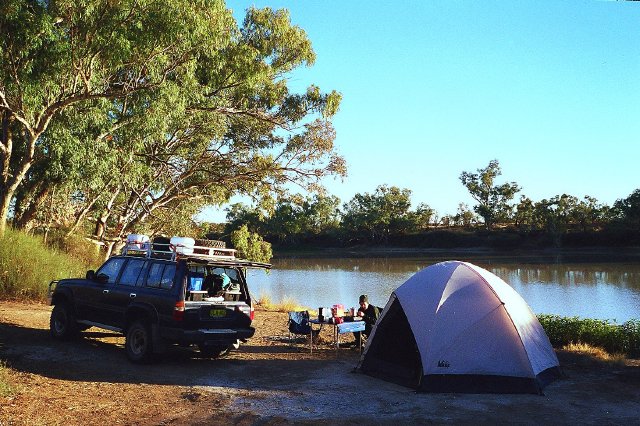Birdsville, Queensland to Innamincka, South Australia
We visit the wonderful Birdsville Working Museum in the morning, then it's a long driving day down 4WD tracks to Innamincka, through sand dunes and across vast stony desert plains.
We left Birdsville and headed east through gradually diminishing sand dunes... they got further and further apart, until they were no more and all that remained were long stony slopes. These stones were fist sized and smaller dark red brown rocks, and would stretch for miles, glistening when they caught the sun. Despite the desolate feeling, I felt rather refreshed, almost commanding. You can see a long way in that country, so when you see a dust plume miles off, it takes five minutes to get to you, and you know to pull over for that road train to pass.
We cut off the track 114km after Birdsville and headed south through Cordillero Downs, a huge cattle station. They used to run sheep there until the 1940's and all that remains now is The Southern Hemisphere's Largest Wool Shearing Shed. Or rather, the Remains Thereof. It could accommodate 120 shearers at a time. Perhaps what was odd is that the shed and surrounding station buildings were in the middle of one of those vast rocky plains, without much water about at all!
We also passed the ruins of an old stone house, now absorbed into Cordillero Downs. They had a go at it, but couldn't make it, the country was too poor.
I wonder about why some early white settlers thought this was good country. Maybe it was like Nevada and those Great Basin states in the US. They used to look quite different: before settlers came, they were perennial grasslands, which probably looked very lush. But after the sheep and cattle came and ate out the grass, only the plants that they didn't like survived--in Nevada's case, it was sagebrush. The grasses weren't the weedy annual grasses that grow quick, set seed, and die... they live for dozens of years, and only set a little bit of seed every year, if at all. And since they don't reproduce faster than the stock eat, they die out. It's hard to imagine places like central Nevada looking different, but they once did, and only a short while ago. I'm thinking that parts of Australia probably had the same experience.
Anyway, we pulled into Innamincka, and found a wonderful campsite by the Cullybulla waterhole east of town an hour before sunset. It's private, secluded, and at the water's edge. Surprisingly, there aren't any flies or mosquitoes around! Maybe there's so much water here they don't need to swarm all over us to try and lick up our sweat. It's a welcome relief.
Weird Wildlife Sighting
An emu in the middle of the rocky plains. There wasn't anything around for literally miles. It was all very odd.
